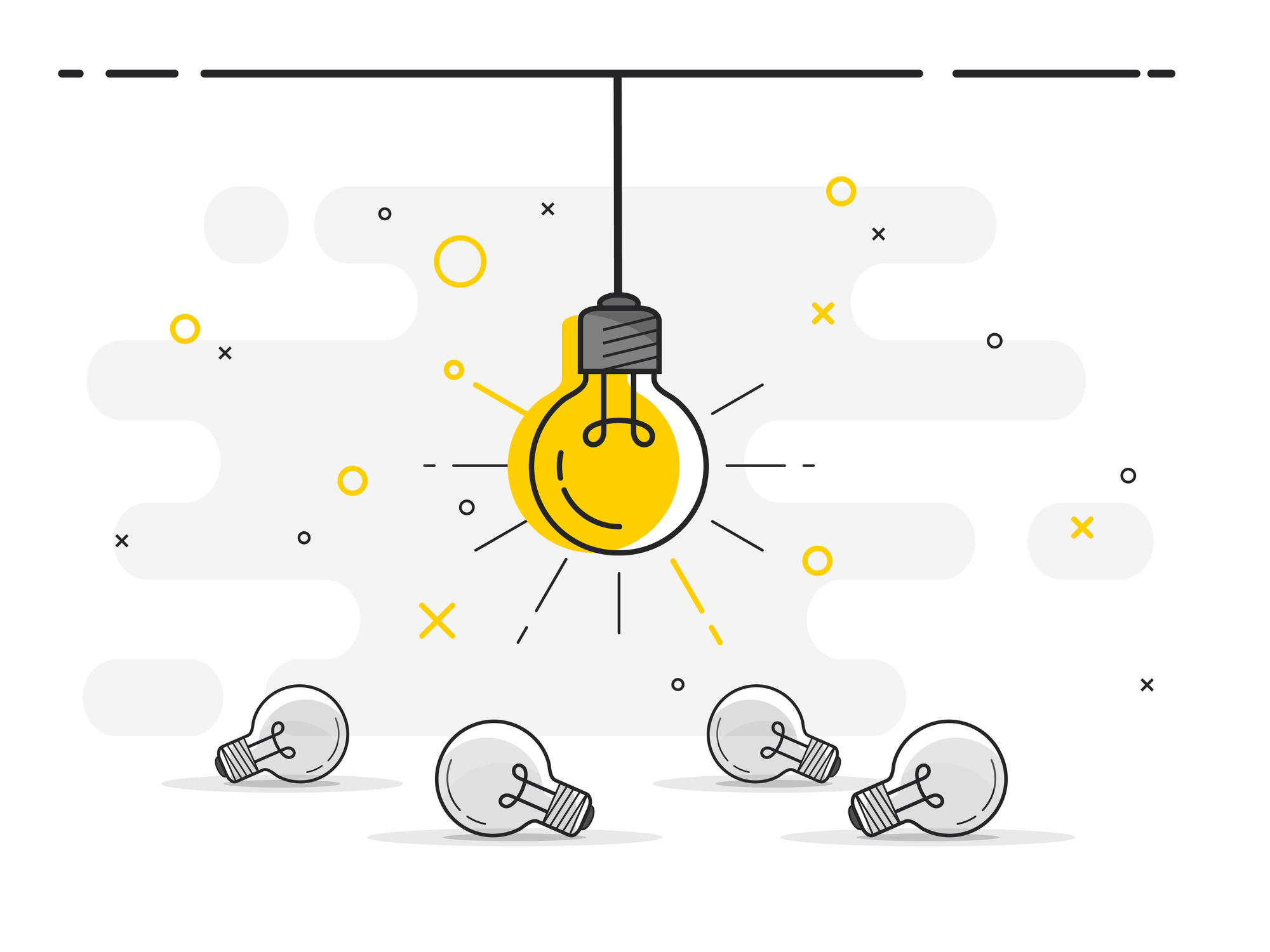Turning product ideas into reality
Have you got a brilliant new digital idea? Don’t let it be the one that got away.
Turning that lightbulb moment into an actual reality can seem too impossible to even contemplate. But when you break it down into actual stages, it can begin to feel less daunting.
Every new conception will involve a slightly different route to market, there’s no exacting blueprint. But the order you get there remains the same. And we can help at any stage – even if you are still waiting for that ‘ah-HA!’ moment to pop into your head.
1. Ideation
Maybe you haven’t even got an idea yet. Don’t get stuck on inventing a whole new concept, keep in mind that most of the best ideas are the result of iterating an existing product.
The SCAMPER model is a useful tool to brainstorm how to improve something that is already on the market.
Once you’ve got your idea, make sure your first version is as basic as possible. It could have scope for lots of features, but at this point it’s important to focus on the Minimum Viable Product (MVP). Don’t over complicate, cut out the nice-to-have features and concentrate on something small and build on it. This approach will make it easier to change direction if needed.
2. Research
You need to validate your idea and ensure you are creating something that people will actually pay for.
Get market feedback. And look at hard data by using google trends. It’s important to get feedback from a substantial and unbiased audience.
Competitor analysis is key too. Compare any similar products, visit websites, sign up for emails, check out reviews and monitor their marketing. Then think: is there a demand? Can I differentiate?
3. Design
Before you approach to build, you need a concrete design before you can get a prototype. Even if you are getting experts in, it’s still helpful to have initial hand drawn sketches and wire frames. You don’t need to be a designer for this. Just roughly draw out the basics to help others – and yourself – fully understand the vision.
If/when you do get a designer, then you can explore how your product will look on different technology types e.g. iPhone 13 compared to an older android. And get smaller details, like interface animations, nailed down. It can make all the difference to whether your product will be brilliant rather than just okay.
4. Prototyping and development
The goal of this phase is to create the most basic version of the product as possible. So, you’ll have a simple design with a well-thought-out UI and UX. You can then run tests to see how your target audience react and start improving designs and functionalities.
You can test: is the app working as it should on all devices? Is its speed sufficient?
This is your chance to iterate again and again, until your product is ready to go live.
5. Launch
It’s the moment you’ve been waiting for! We normally advise a soft launch as there might be quirks that need to quickly be ironed out. So, keeping low profile at this point can give you more time to make sure your product will live up to expectation. It can be difficult to win users back if they experience a disappointing beginning, so make sure it’s polished before you roll out the fanfares.
6. Maintenance, support and future development
Remember: a product is never finished. Its launch is just the beginning. Ongoing tech support, testing, tweaking and maintenance is essential in safeguarding your investment.
And most importantly, the key to lasting success is continuous development. Make sure your brainchild always stays up to speed with its competitors, otherwise you’ll be back to square one again.
Check out the latest lightbulb moments we’ve bought to life.



